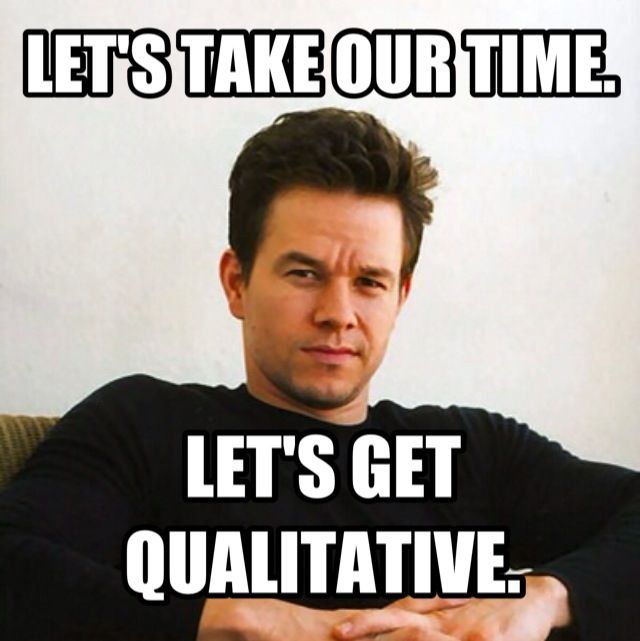Quantitative research gets a lot of hype, often leaving poor old qualitative research looking on from the sidelines. It may be because it’s often easier to conduct quantitative studies. There’s no human connection involved, and there’s usually less complex and nuanced data to sift through afterwards.
But if you’re in the camp that finds the prospect of qualitative research in UX daunting, then you’ve come to the right place. Below, we’ll outline 7 qualitative user research methods that’ll make your life easier, as well as tools that you can use to make it a breeze.
Firstly, let’s clear up the difference between qualitative and quantitative.
What’s the Difference Between Qualitative and Quantitative Research?

To put it simply, you’ll use quantitative research to gather data that’s numerical and measurable. Qualitative research, however, relies on the power of observation and subjective factors such as opinions and motivations.
With qualitative research in UX, results are more open to interpretation. This can make it trickier to interpret as it’s more time-consuming to conduct. Having said that, qualitative research must go hand-in-hand with quantitative research. Relying only on quantitative research methods will fail to uncover the entire story. Mere numbers lack context and, more importantly, emotion.
When to Use One Over the Other
If you’re tracking how many users click on a button, that’s quantitative research. While it might be important for tracking conversions, for example, it doesn’t uncover the whole story. What about all those people that aren’t clicking on the button? You know they’re not doing it, but quantitative research will never reveal why. For that, you’ll need qualitative research.
You could conduct a survey or ask open-ended questions in a user interview. You can also use usability testing software like Maze to uncover why users do what they do. After all, it’s not always a conscious decision to avoid clicking a button. Some users may not have even seen the button!
Quantitative research can never reveal these kinds of insights, but you still need it to inform your qualitative research focus. Leaving one out over in favor of the other is like trying to bake bread but deciding to skip on the flour. When the two are combined and given equal weight, that’s when the magic happens.
The Evolution of Qualitative Research in UX

For a long period of time, qualitative research was limited to surveys…and more surveys. But surveys aren’t super effective because they’re often limited to a pre-defined set of questions, which may overlook aspects the survey creator hadn’t even thought to ask about. Also, surveys remove the ability to ask follow-up questions if the customer has something interesting to say. With the rise of the user interview tools, and advances in AI, qualitative research is now far more feasible, accurate, and accessible. Collecting emotional insights is easier than ever.
"The worst thing that contemporary qualitative research can imply is that, in this post-modern age, anything goes. The trick is to produce intelligent, disciplined work on the very edge of the abyss."
David Silverman, Interpreting Qualitative Data Tweet
While it’s evolved in many incalculable ways, here are four solid improvements that today’s UX qualitative research methods have adopted.
- More user-centered.
Over the years, qualitative research in UX has become more user-centered. It holds a greater value in understanding users’ perspectives and experiences. This enhanced focus can be found in qualitative user research methods like user interviews, usability testing, and in focus groups. - More diverse methods.
There are far more methods to conduct quality qualitative research than there were previously. In addition to the traditional methods outlined above (user interviews and focus groups), researchers are now using methods such as diary studies, participatory design, and contextual inquiry to gather data on users’ experiences. - More empathetic.
Empathy is crucial to qualitative research in UX. If you don’t connect with the user, you don’t build for the user. By having a deeper understanding of the users’ needs and wants, techniques like empathy mapping and persona creation have blossomed. - More collaborative research.
Qualitative research in UX has become more collaborative, with a greater emphasis on involving stakeholders in the research process.
Unfortunately, not all stakeholders can easily access specialized user research repositories as the learning curve is too high for what they need it for. If you or your team are facing a similar problem, you might want to try out a free solution: tl;dv.
tl;dv is a remote UX research tool that enables you to record, transcribe, and create timestamps so that you can share the most important parts of your user interviews (or any other call) with ease! Gone are the days of stakeholders struggling to access the voice of the customer. Now they can open a hyperlink in Slack, Notion, or their work chat of choice, and immediately watch the most crucial parts of the recorded user research.
On top of this, if a stakeholder, or anyone else, wants to find a meeting where a specific topic was talked about, they can use the powerful search function by typing in a keyword and it will automatically generate a list of all the videos in which the transcript mentions that keyword.
That’s not all. tl;dv empowers you to take your user research to the next level. Its automated note taking feature encourages you to be fully present in the conversation so that you don’t miss a beat, meanwhile, you’re able to manually add notes where you see fit in a smooth and seamless manner so that you get the best of both worlds. At the end of each meeting, you’ll also receive an AI-generated summary of action points.
Your qualitative research for UX has never been easier.
7 UX Research Qualitative Methods That’ll Make Your Life Easier
1. Usability Testing
While usability testing can be performed one-on-one in a lab, virtual products or online services like websites or apps can be tested effectively and remotely through modern tools and software.
For usability testing, you essentially observe the user with your product. You’ll watch how they interact with it to help identify pain points, areas for improvement, and potential usability issues.
Some tools and software that product teams can use for usability testing include UserTesting, Maze, Lookback, UserZoom, and Optimal Workshop.
2. User Interviews
User interviews are one of the most reliable ways of arriving at qualitative-derived insights. Essentially, it’s when researchers conduct one-on-one interviews with users to gather data on their goals, behavior, attitudes, and needs. Regardless of whether the interviews take place in person or remotely, this style of research is typically time-consuming, exhausting, complex, and difficult to document.
Until now…
As mentioned above, tl;dv makes the perfect sidekick for user interviews. It’s the best way to accurately capture the users’ needs, wants, and pain points, as well as document them in an effective and easily accessible manner. It’s the quintessential tool for any qualitative user researcher.
It works with both Zoom and Google Meet so you won’t have to switch up your interview style. This actually unbalances the decision making in regards to whether to conduct an interview in person or online. Online meetings can be recorded, transcribed, automatically summarized, and include speaker recognition. The juiciest insights need to be rewatched and shared. It’s impossible to effectively share what a user said and felt in an in-person interview.
3. Heat Mapping
Heat mapping is one of the best UX research qualitative methods because it allows researchers to track and analyze user behavior on a website or app. Heat maps can provide insights into where users are clicking, scrolling, and spending time, which provides a massive boost when it comes to making informed design decisions.
The most popular heat mapping tool is Hotjar, which offers to let you know everything you ever wanted to know about your website that analytics never told you. Other options for heat mapping tools include Crazy Egg, Mouseflow, and ClickTale.
4. Participatory Design
Participatory design is a qualitative UX research method that involves users in the design process in order to understand their perspectives and ensure that their needs are met.
It can take many forms, such as co-design workshops or user testing with prototypes. At its most basic, users are given creative materials in order to construct their ideal experience. This allows researchers to uncover what matters most to them and why.
Product teams can make use of these excellent tools for participatory design: Miro, Figma, InVision, and Sketch.
5. Focus Groups
Focus groups consist of group discussions about a product or a service to explore new perspectives and identify common themes. It’s a tried and tested method of qualitative user research that can provide insights into user behavior, attitudes, and preferences.
Often, focus groups are conducted in person, but times are changing. A single Google Meet can hold 100 participants, while a Zoom call can have as many as 300! With tl;dv in the meeting, its powerful AI speaker recognition feature will generate an accurate transcript even with dozens of speakers. Oh, and it’s FREE!
6. Journey Mapping
Journey mapping does exactly what it says on the tin: it maps the customer’s journey and interactions with a product or service. It’s a visual representation which is best used to unearth pain points and opportunities for improvement.
Journey maps are actually a qualitative UX research method that includes some of the others. Interviews, surveys, and user testing all collide to create the customer journey map. This is a way of planning a broader user experience design strategy, which may include plans to redesign specific touchpoints, implement new technologies, or even improve customer support.
Some tools and software that product teams can use for journey mapping include Smaply, Canvanizer, UXPressia, and Lucidchart.
7. Diary Studies
Diary studies are a longitudinal way of measuring the qualitative user experience. Basically, it’s a research method in which data is collected from the same participants over an extended period of time. It typically lasts months.
This research method involves asking participants to record their experiences, behaviors, and thoughts over time, usually in a type of diary, hence the name.
In diary studies, the participants are all recording their personal experiences, but they may use different devices depending on the vision of your research. Whether they write a diary on paper, or keep a digital diary with a camera or smartphone app will depend on your research objectives and how you want to collate the data at the end.
One of the drawbacks of diary studies is that it can only be done for data that is easily recorded by the participants. This completely rules out any subconscious decisions, which are said to influence 90-95% of human behavior.
If your product team wants to include diary studies into their qualitative user research, then tools like Dscout, Moment Diary, ExperienceFellow, and Qualtrics will be helpful.
Take Your Research Game to the Next Level
With these 7 tips for qualitative research in UX, and a clear understanding of the differences between quantitative and qualitative research, your research game is ready to rocket to the next level.
Don’t forget to invite tl;dv to your user interviews and focus groups. Your future you will thank you for all the time, energy, and effort saved when using this tool to share actionable insights.





